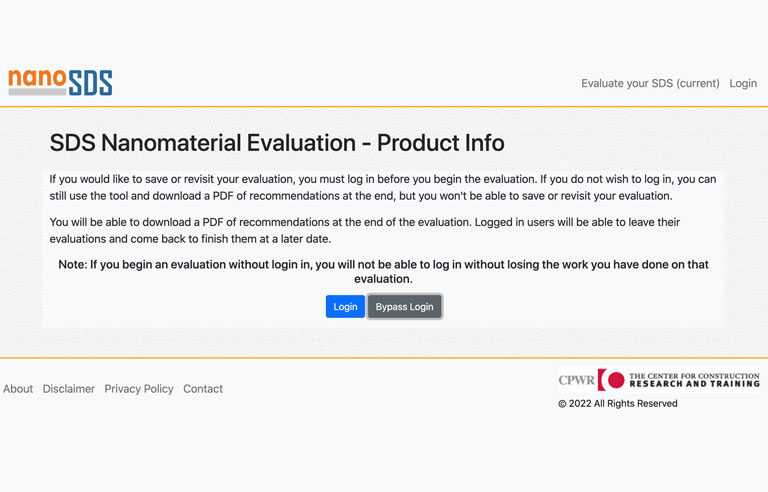Improving nanomaterial Safety Data Sheets: CPWR launches e-tool

Photo: CPWR – The Center for Construction Research and Training
Silver Spring, MD — A new e-tool from CPWR – The Center for Construction Research and Training is intended to help manufacturers, distributors and importers of products that contain nanomaterials strengthen their Safety Data Sheets.
The free, interactive Nano Safety Data Sheet Improvement Tool poses to users a series of questions to help evaluate their existing SDSs, and then generates a report with recommendations for improvement. That report is based on the 16 sections of an SDS required by OSHA that follow specifications of the Globally Harmonized System of Classification and Labeling of Chemicals.
Nanomaterials – materials that have at least one dimension (height, width or length) that’s smaller than 100 nanometers – are chemical substances whose microscopic size gives them properties they don’t possess in their larger form.
CPWR has identified more than 800 nanomaterials that are increasingly being used in construction. Those materials include sealants, coatings, paints, concrete, flooring, lubricants and roofing materials. When workers use the materials, they can be exposed to fumes, gases, vapors and dust containing nanomaterials, which can present health hazards.
| Sign up for Safety+Health's free monthly email newsletters and get the news that's important to you. |
Knowing which materials could be hazardous allows workers to take precautions to mitigate the risks, according to CPWR, which says SDSs for these products should clearly identify nanomaterials that are present and offer information on potential safety and health risks.
A 2019 study led by Laura Hodson, the retired coordinator of the NIOSH Nanotechnology Research Center, revealed that only 3% of the nanomaterial SDSs evaluated were satisfactory and 79% needed significant improvement.
Post a comment to this article
Safety+Health welcomes comments that promote respectful dialogue. Please stay on topic. Comments that contain personal attacks, profanity or abusive language – or those aggressively promoting products or services – will be removed. We reserve the right to determine which comments violate our comment policy. (Anonymous comments are welcome; merely skip the “name” field in the comment box. An email address is required but will not be included with your comment.)

